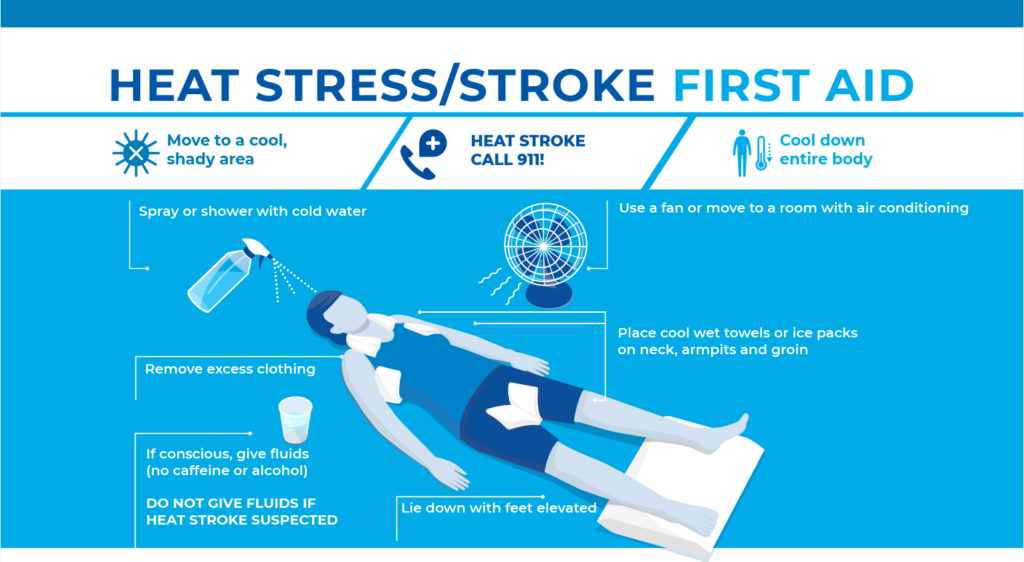Dangers of heat stress at work
Workers need to hydrate when their bodies heat up because they lose fluids and salt through sweat which make them less able to cool themselves down. Warning signs of heat stress when working in a hot environment include:
- Excessive sweating
- Dizziness
- Nausea
If heat stress is not recognized and treated early, it can lead to serous disorders and effects on the body such as:
Heat cramps signs and risks
- Painful muscle cramps
- Can lead to heat exhaustion
Heat exhaustion signs and risks
- Shallow breathing
- Increased heart rate
- Weak, rapid pulse
- Cool, pale, clammy skin
- Sweating
- Weakness, fatigue, dizziness
- Headache and nausea
- Fainting
- Muscle cramps
- Can lead to heat stroke
Heat stroke signs and risks
- No longer sweating
- Agitation and confusion
- Decreased level of consciousness and awareness
- Headache
- Nausea and vomiting
- Seizures
- Increased breathing rate
- Irregular pulse
- Shock
- Cardiac arrest
Preventing heat stress injury
Determine whether it’s necessary to work in hot conditions. Then adjust work practices and policies based on your risk assessment to limit the risk.
Accommodations for working in heat:
- Consider whether work can be done during the cooler parts of the day.
- Monitor environmental conditions and modify facilities, equipment, and processes to reduce heat exposure.
- Establish cooling areas and rest stations with shade and water.
- Ensure there is adequate first aid coverage and have emergency procedures in place.
- Most important, educate and train workers at risk for heat stress on how to recognize signs and symptoms and what to do in response.
Heat stress PPE considerations
As your last line of defense, where employees have to work in heat, consider whether existing personal protective equipment is appropriate to the environment. In choosing PPE for employees at risk of heat stress, consider materials and technology that can help keep workers cool.
- Look for evaporative, cooling fabrics—especially for neck shades and crown coolers to be worn under hard hats.
- Consider head protection options with good ventilation, washable sweatbands, breathable open-cell padding, and thermal barrier technologies.
- Consider cooler options for sun protection as well if employees are working outdoors.
Heat stress and heat stroke are preventable conditions with awareness and defense. It’s important to recognize the symptoms of these conditions early and take action to prevent serous health concern.
Heat stress resources
Heat stress risk factors
Environment
- Radiant heat from direct or indirect sunlight
- High Humidity
- Air temperature that’s hotter than skin temperature
Work
- The more active or hard the work is, the more heat the worker will produce
Worker
- Conditioning (regular work in hot environments makes workers less prone to heat stress)
- Poor health such as obesity, advanced age, and medical concerns
- Hydration
- Clothing/PPE

